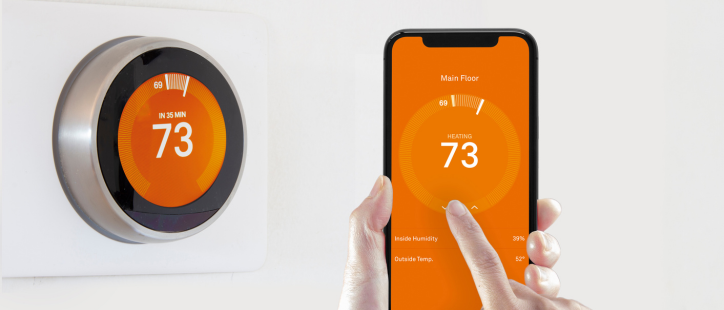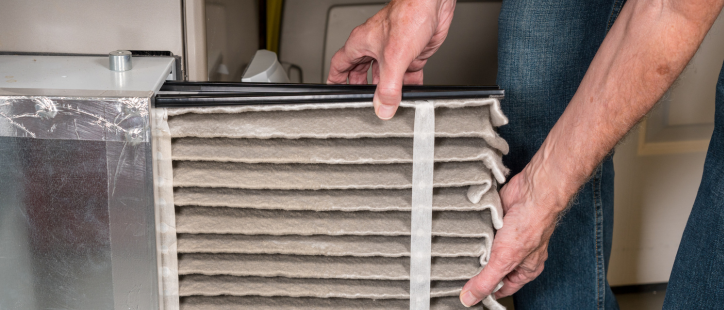A furnace is a vital component of your home’s heating system, designed to keep you warm and comfortable during the cold months here in New England. However, when you discover that your furnace is leaking water onto the floor, it can be a cause for concern. Leaking water can not only damage your furnace but also pose safety hazards. In this helpful article, we will explore the common reasons why your furnace might be leaking on the floor and provide solutions to help you diagnose and address the issue.
- Condensation Drain Blockage:
One of the most common reasons for furnace leaks is a blocked condensation drain line. Modern high-efficiency furnaces generate condensation as a byproduct of the combustion process. This condensation is typically drained away through a PVC pipe. If the drain line becomes clogged with debris or algae growth, water can back up and leak onto the floor.
Solution:
- Turn off the furnace to prevent further leaking.
- Locate the condensation drain line (usually a white PVC pipe) and inspect it for blockages.
- If you find a blockage, carefully remove it using a long, flexible brush or by pouring a mixture of water and vinegar down the drain to dissolve algae.
- Once the drain line is clear, restart the furnace to ensure proper drainage.
- Humidifier Issues:
If your furnace has a built-in humidifier, it may be the source of the leak. Humidifiers are designed to add moisture to the air, but if the unit or its components are damaged or improperly installed, water can leak onto the floor.
Solution:
- Turn off the furnace and humidifier.
- Examine the humidifier unit and its connections for visible leaks or damage.
- Ensure that the water supply line is securely connected and not damaged.
- If you find any issues, consider contacting a professional HVAC technician to repair or replace the humidifier components.
- Clogged Drain Pan:
Furnaces are equipped with a drain pan beneath the unit to collect any condensation or water leakage. If this drain pan becomes clogged with dirt, debris, or rust, it can overflow and cause water to leak onto the floor.
Solution:
- Turn off the furnace.
- Locate the drain pan, which is typically located at the base of the furnace.
- Carefully remove any debris, rust, or blockages from the drain pan.
- Check for cracks or damage in the drain pan that may require replacement.
- After addressing the issue, restart the furnace and monitor for any further leaks.
- Cracked Heat Exchanger:
A cracked heat exchanger can lead to water leakage from your furnace. The heat exchanger is responsible for transferring heat from the combustion process to the air that circulates through your home. When it cracks, it can allow water to escape, leading to leaks.
Solution:
- Turn off the furnace immediately for safety reasons.
- Contact a professional HVAC technician to inspect the heat exchanger and assess the extent of the damage.
- In many cases, a cracked heat exchanger necessitates furnace replacement due to the potential safety risks associated with carbon monoxide leaks.
- Improper Venting or Exhaust Issues:
If your furnace is improperly vented, it can lead to moisture accumulation and water leaks. Exhaust gases should be safely vented outside, but if the venting system is damaged, blocked, or improperly installed, condensation can form inside the furnace and cause leaks.
Solution:
- Turn off the furnace.
- Examine the venting system for any visible damage or blockages.
- Ensure that the vent pipes are properly connected and sealed.
- If you suspect venting or exhaust issues, contact a professional HVAC technician to assess and repair the system.
- Frozen Condensate Line:
In extremely cold weather, the condensate line leading from the furnace to the outside can freeze. When this happens, it can cause a backup of condensation within the furnace, resulting in leaks.
Solution:
- Turn off the furnace.
- Locate the frozen condensate line and gently thaw it using warm water or a heat source (such as a hairdryer) to melt the ice.
- Once the line is thawed, restart the furnace and monitor for any further issues.
- Consider insulating the condensate line to prevent future freezing.
Call the Furnace Experts at Maffei Services When Your Furnace is Leaking Water
When your furnace is leaking water onto the floor, it’s essential to address the issue promptly to prevent further damage and potential safety hazards. By understanding the possible causes and solutions for furnace leaks, you can maintain a dry, safe, and comfortable home during the colder seasons. Regular maintenance and inspections are also crucial for preventing furnace leaks and ensuring that your heating system operates efficiently throughout the upcoming winter months.



